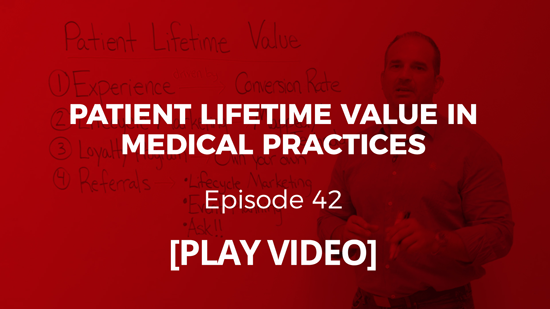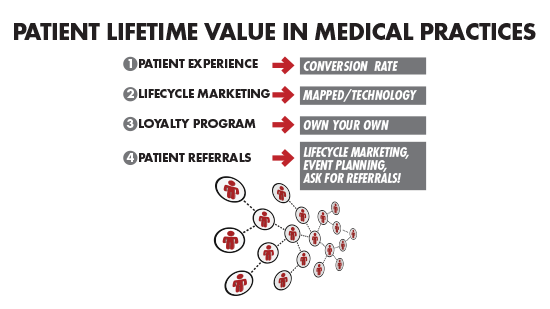Client Experience
The first of these is fairly obvious: the patient’s experience. The patient’s experience is ultimately going to be driven by your conversion rate. If you cannot convert someone who comes to your office for a consultation into a patient, there’s not going to be any value to your interaction with them. That’s why the conversion rate should be the focus of your interaction with your clients. You want to make a potential patient’s experience at your practice the best it could possibly be so that they will want to return. The investment that you make in increasing patient satisfaction will pay off in the long run.
Lifecycle Marketing
Don’t let your patients forget about you. To increase revenue, you need to constantly stay in front of your existing patients – but only in productive manners. A productive manner is not barraging them with emails or marketing everything you have going on in your practice to them. Rather, it’s about selling the right products to them at the right times. You’re going to want to make sure you have a mapped set of messages to send to a consumer based on their individual relationship with you. Market in relation to what procedure they had done and what other procedures are relevant to that one. The time you should contact them also depends on what they had done, and what they potentially would want done. Map out the lifecycle of procedures so that you know what the appropriate time is to try and sell other procedures to patients, depending on their previous ones.
Utilizing technology has the potential to maximize your success. Once you have the lifecycle of patients mapped out, use technology to automate what messages are sent to them. You should be able to go through your practice management database and send these messages out automatically. It’s best if you have a place in this database that clearly displays time frames so that you can send these messages out at the right time, and make personal phone calls at the right time as well.
Loyalty Programs
The greatest challenge loyalty programs face is that they are usually provided by product manufacturers, not your individual practice. We highly recommend that you own your own loyalty program. You want to be able to personally incentivize patient loyalty. These are your patients, this is your program; you’re going to want to have control over it so that you can adjust it to best suit your practice.
Furthermore, product loyalty programs are not specific to your business. This is to say, a patient could take part in the same loyalty program at your practice and another one as long as the same manufacturer is offered by both, meaning that they have no loyalty-based incentive to stay with you over the other practice. They could go take the points – which are essentially a currency – that they earned with your program and spend them at another practice in your competitive market. To avoid this, you have to create your own loyalty program. Creating a loyalty program can be a complex process, but in the end it’s definitely a benefit to your business.
Referrals
Another aspect of patient lifetime value that may seem obvious, but is still incredibly important, is maximizing referrals. You’re going to want to use your lifecycle marketing map to determine at what times you should focus on gaining referrals from a patient. Another great way to find new patients using existing ones is to host in-office events. Current clients will often invite their friends to these, which will expose new people to your practice. Another effective way of getting referrals is asking for them. If you have a good established relationship with a client, it is ok to ask them to refer people they know to you. If a patient has continued to come back to your practice and likes you, they will likely be open to doing so.

















